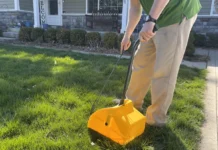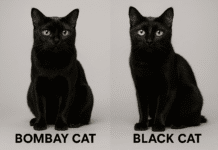Last Updated on May 18, 2025 by Rida Hamid
Dog harnesses are a pivotal tool for pet owners seeking to ensure the safety and comfort of their canine companions during daily walks. A dog harness is an equipment piece that fits securely around a dog’s body, distributing pressure across a larger area compared to traditional collars. This can play a critical role in mitigating the strain on a dog’s neck which can occur with collar use, especially in dogs that pull or lunge. The benefits of using a harness are multifold, including providing better control for the handler, enhancing the dog’s comfort, and potentially reducing the risk of injury.
When considering the plethora of dog harnesses available, it is important to recognize that they come in different styles meant for various purposes. Standard harnesses are everyday options that suit many dogs, providing basic control and comfort. No-pull harnesses are designed with mechanisms to discourage pulling, helping to teach dogs to walk with a loose leash. Dog harnesses with handles offer additional control and assistance, ideal for dogs that require guidance or have mobility issues. Lastly, specialised harnesses are tailored for specific needs, such as for service dogs or those with unique body shapes.
Table of Contents
III. The Importance of Proper Fit
Ensuring a proper fit for your dog’s harness is not only a matter of comfort but also of safety. Measuring your dog accurately is the first step in finding the right harness. This typically involves measuring the broadest part of the dog’s chest and around the neck, as well as taking the dog’s weight into account. Once you have the right size harness, making precise adjustments is crucial to prevent chafing, discomfort, or escape. A well-fitting harness should be snug but not tight, allowing enough room to fit two fingers between the harness and your dog’s body. Be aware of signs of an ill-fitting harness such as persistent rubbing, hair loss, or any signs of discomfort from your dog.
IV. Dog Harnesses with Handles
Dog harnesses with handles bring further innovation to the design and functionality of traditional harnesses. The inclusion of a handle can significantly aid in manoeuvring or controlling the dog in challenging situations, such as guiding them away from hazards or assisting older or rehabilitating dogs. These handles can also provide a means to more easily manage dogs with service roles or those participating in activities such as hiking where terrain might require extra support. When to use such a harness generally depends on the specific needs of the dog and the situation at hand, whether it’s for training purposes, physical assistance, or improved control.
The benefits of training and control with a dog harness with handle are clear. Using the handle can ensure consistent control during early training stages, particularly in teaching dogs not to pull or in recall training. Furthermore, during walks, a handle can prove invaluable in maintaining control over excitable dogs or when passing through high-traffic areas.
V. Enhancing Daily Walks with a Dog Harness
The safety aspects of a dog harness can significantly enhance the quality of daily walks. By reducing neck strain and the potential for related injuries, dog harnesses ensure a safer and more pleasant walk for both dog and owner. This is especially important in crowded areas or traffic, where a sudden lunge could lead to a dangerous situation. Harnesses provide a level of control that can prevent these incidents and safeguard the well-being of your pet.
Enhancing the walking experience is about more than just safety, it’s also about enjoyment. A properly-fitted harness encourages positive behaviour from dogs by allowing them to explore and sniff without the constant tugging and pulling on their neck. This enhances the psychological benefits of walks, providing mental stimulation while maintaining a comfortable pace.
VI. Special Considerations for Small or Large Dogs
Harnesses tailored for small breeds often feature design elements that account for their delicate structure, such as lighter materials and more padding for comfort. They also ensure the harness is escape-proof, keeping the little adventurers safely contained — and visibility features like reflective materials are crucial for the safety of these small canines.
Conversely, harnesses for large or strong breeds are equipped with durable materials and reinforced stitching to withstand the increased force these dogs can exert. For these powerful dogs, a harness can also have additional control features to help handlers manage their strength on walks effectively.
VII. Maintenance and Care of Dog Harnesses
Just like any other piece of pet equipment, dog harnesses require regular maintenance. Cleaning your dog’s harness is essential to keep it in good condition and to avoid potential skin irritations for your dog caused by a buildup of dirt. This can usually be done with mild soap and water or following manufacturer’s instructions. Regular inspection for wear and tear is also critical since damaged harnesses can pose safety risks. The life of a harness can often be extended by caring for it properly, which might mean fixing minor issues before they turn into significant problems.
VIII. Conclusion
Incorporating a dog harness into your dog’s life plays a significant role in their overall well-being, particularly for daily walks. Choosing the right harness means making a deliberate decision in favour of your furry companion’s comfort and safety. By embracing the transformative power of harnesses, owners are better equipped to foster a positive walking experience, ultimately strengthening the bond between them and their dogs. Whether you opt for a basic model, a no-pull design, or a dog harness with handle, the right choice can make a world of difference for the quality of your walks together.
















